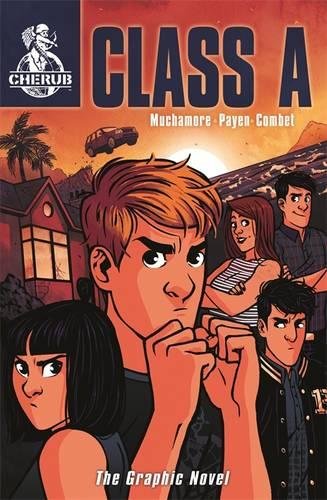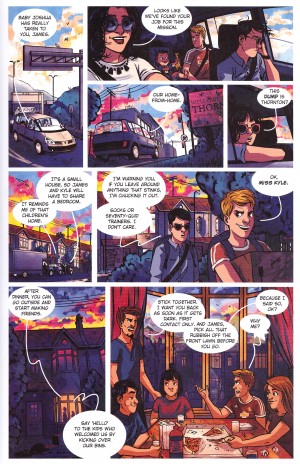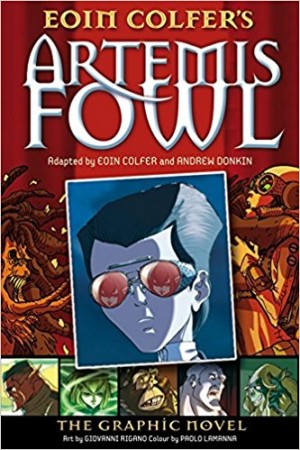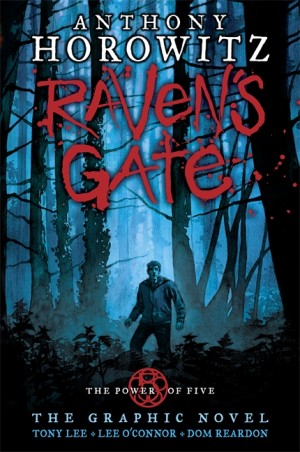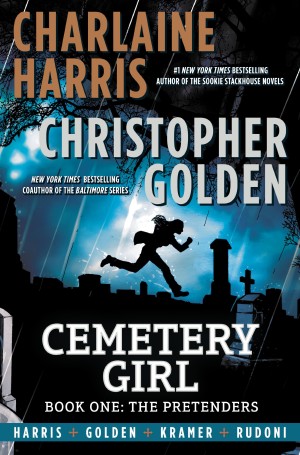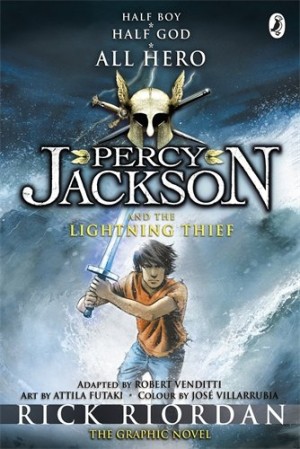Review by Ian Keogh
The Cherub organisation trains children under eighteen to be used in important security missions when adults would be a liability. As seen in The Recruit, James Choke was given the choice of joining the programme or life in an orphanage, successfully completed his training, and distinguished himself in his introductory mission.
If he thought life was going to be easy from that point, James receives a massive awakening during a failed training exercise and its subsequent fallout, relief only coming with a proper mission. The background to this would require multiple extra pages if presented in comic form, so it’s a lapse back into text in the form of two dossier pages giving information onKeith Moore and his drug dealing activities. Conventional police infiltration has failed, and it’s thought the best method of success lies in the Cherub agents befriending Moore’s children and learning about the KMG gang that way.
Neither creator responsible for transferring The Recruit to the graphic novel format remains, with Robert Muchamore’s original novel now adapted in France, translated by Helen Chevallier and the dialogue given a polish by Andrew Donkin. He’s an old hand at this kind of work, with his highest profile being on the Artemis Fowl adaptations. As with those, the colouring is jarring and in places downright ugly. As no separate credit is given, it’s presumably the work of artists David Combet and Baptiste Payen, whose primary technique is to use two shades for an entire page. The colouring apart, the art tells the story, although some more imaginative viewpoints and greater use of full figures would improve it considerably.
Setting a fair portion of the plot in a less than desirable estate where few live by choice again highlights author Robert Muchamore’s social conscience, and there’s a convincing portrayal of teenagers who have nothing to their lives and what they do to alleviate boredom. The way the teenagers talk also convinces, with not a thought for political correctness, and it opens the door to discussion of tolerance, but without preaching.
As no extra writer is credited for the French edition, adapting the original novel is presumably the work of the artists, and it isn’t as smooth as The Recruit. This seems to stem from a desire to be as inclusive as possible, which on a few occasions leads to the introduction of a plot thread with some tension that’s cleared up a page or two later, so nullifying the intended mood. An example would be James’ sister Lauren getting into trouble, which is rapidly resolved. They also undersell certain scenes. James having watched The Shining is pivotal to a later sequence, yet the connection isn’t obvious.
While the adaptation doesn’t match The Recruit, Class A grips with the type of action thrills that have a universal engagement beyond the young adults at whom the material is aimed. There’s a constant undercurrent of tension, and as has already been shown, Muchamore can be unsentimental when it comes to the wellbeing of his cast. A considerable time elapsed between the adaptations of Muchamore’s first and second graphic novels, so let’s hope it’s not too long before Maximum Security follows.
